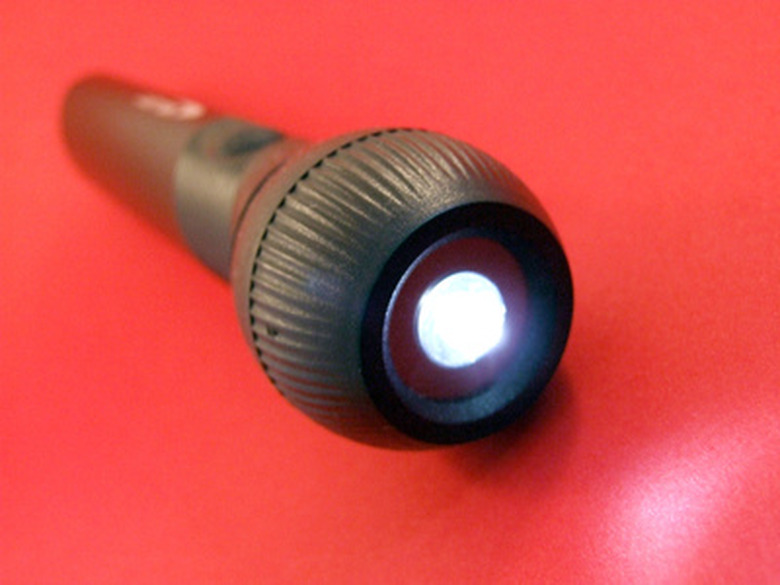Xenon Vs. LED Flashlights
Flashlights today are brighter and more efficient than those of the past thanks to the introduction of new technologies in bulbs. Lower energy demand also means the use of less battery power which translates into smaller and lighter-weight flashlights. Making this possible is the replacement of traditional tungsten incandescent bulbs with a number of other choices, including light-emitting diodes (LEDs) and xenon lamps.
Bulbs
Bulbs
Traditional flashlights used incandescent bulbs with a tungsten filament that glowed in a gas-filled glass enclosure. In a xenon bulb, the gas itself glows rather than a metal filament. The light emission from a xenon bulb is brighter than for any other type of lamp, and it uses less energy than most. Because there is no degradation of a heated filament, xenon bulbs also have a long life.
LEDs
LEDs
LEDs are solid-state semiconductor devices that emit light when electric current is passed through them. Like xenon lamps, their emissions are more concentrated in the visible range, with less wasted energy going into heat and other radiation. The light output from a single LED is quite low, so flashlights typically use bulb assemblies that incorporate several diodes.
The performance of LEDs also is far superior to that of traditional bulbs. LEDs are brighter and use less energy, so battery life and bulb life are much better than that provided with standard bulbs or other alternative lamps. Their solid-state construction also makes them more durable.
Light Characteristics
Light Characteristics
A major advantage of the newer flashlights is in the color of their light. Xenon bulbs produce a white light that matches that of daylight more closely than other lamps. The human eye is adapted to see this light much better, so less illumination is needed for good visibility. With LEDs, the light is brighter than that of traditional bulbs, though not as well-matched to the eyes as xenon lamps.
Cost
Cost
The highest-quality LED and xenon flashlights are somewhat more expensive than their incandescent predecessors, with some costing as much as $50. Cheaper, mass-produced versions of small LED flashlights commonly are available for as low as $5.
Xenon or LED?
Xenon or LED?
Xenon and LED bulb technologies provide an improvement over traditional flashlights. Of the two, LEDs are more durable and reliable and will last longer. The life expectancy of LED lamps is 100,000 hours of operation. Xenon lights shine the brightest and provide the most efficient use of battery power. Xenon bulbs last up to 20,000 hours on average.
